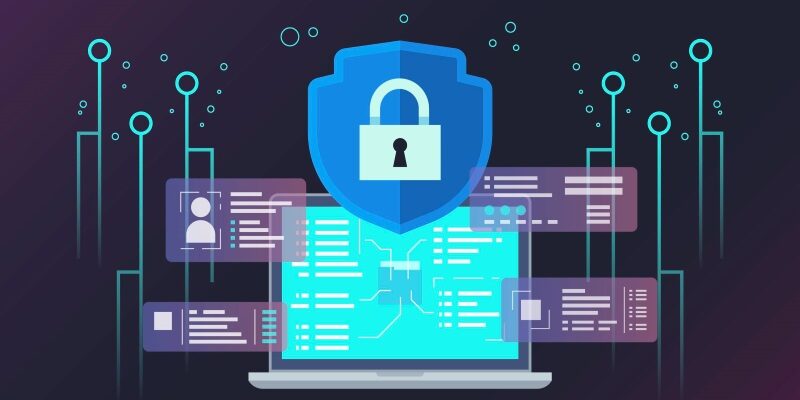India boasts the globe’s third-largest startup ecosystem, with industry forecasts predicting that it will witness a two-fold growth in the next few years, passing the one lakh mark. The country is home to more than 3 lakh SMEs that offer significant job opportunities.
According to the SME Chamber of India, Micro, Small and Medium Enterprises contribute 37.54 percent of India’s GDP.
India’s startup and SME networks are essential to the country’s goal of achieving a $5 trillion economy. SMEs and startups, on the other hand, are vulnerable to a host of issues, the most prominent of which is the ever-present cyber threats.
According to a Cisco report released last year, Cyber-attacks have cost two out of every three SMBs in India more than Rs 3.5 crore in the year 2020-2021.
SMEs and startups operate on a small scale with limited resources and cannot afford to lose even a single day of work. The unexpected outbreak of the COVID-19 epidemic, on the other hand, prevented them from anticipating the ensuing following distant and hybrid work culture.
They sped through the transition in order to choose strategies that would keep the productivity flowing. And, more often than not, they choose to ignore the critical security measures implemented by larger businesses. As a result, a large number of organisations have been vulnerable to cyber-threats.
Cyber-attacks have a number of drawbacks. While a firm loses money upfront, they also impact its business and reputation. In addition, as a result of the intrusion, a firm will be subjected to lawsuits and regulatory penalties. Since most cyber crimes result in the loss of sensitive data, authorities take stringent action against the organisation.
Ever since the outbreak of the Covid-19 pandemic, SMEs and startups have enthusiastically embraced digital transformation, which has opened up new potential for businesses, but it has also furnished opportunities for cybercriminals to target their ineffective or non-existent cybersecurity infrastructure.
During the pandemic, the amount and sophistication of cyber-attacks and data breaches surged at a rapid rate, with vulnerable SMEs and startups being the primary targets.
Cybersecurity threats are malicious and calculated attempts by an individual or organisation to acquire unauthorised access to another network to damage, disrupt, or steal IT assets, computer networks, intellectual property, or any other type of confidential data.
While startups and SMEs have been adopting new technology to make operations easier for their employees and consumers, they have failed to take the necessary security precautions. Though embracing cutting-edge technology like as artificial intelligence (AI), the Internet of Things (IoT), and cloud computing may appear fashionable, these innovations have introduced new kinds of cyber hazards while also increasing the complexity of existing risks.
To avoid being vulnerable to cyber threats, SMEs and startups must reorganise their IT infrastructure and operations. While cutting-edge technologies such as artificial intelligence (AI), cloud computing, and the Internet of Things (IoT) are essential for long-term success, businesses must exercise extreme caution when selecting service providers.
They can opt for Cloud Content Security Platform (CCSP), which includes security services for email, web, next-generation firewalls, endpoint security, and multi-factor authentication (MFA).
This comprehensive smart perimeter streamlines infrastructure minimises complexity and enhances firewall intrusion detection for many applications while reducing cyber-attack routes. It also reduces operating costs and standardises a company’s security platform.
As the cloud becomes the central hub for all disruptive technologies, SMEs must embrace a zero-trust policy that only permits validated and trusted devices to access the corporate network. With a huge number of endpoints, businesses must set access control for two key entry points: remote applications and online access.
This method permits all systems, endpoints, and internal applications to operate as an extra layer of defence to keep attackers out of company infrastructure, whether it’s in the cloud or on-premises.
Employee carelessness is the most common reason for SMEs and startups becoming targets of cyberattacks. Employees are often not cautious when handling sensitive data and information since they lack adequate training to grasp the ramifications of their actions. Employees who leave their workstations unattended or use insecure or public network systems are more likely to have data breaches.
Regular software updates
Important security patches are included in software updates, and they can help keep data safe. Passwords consisting of random words, a combination of lowercase and uppercase letters, and alphanumeric characters can be useful.
Such passwords are difficult to guess and help secure the system from hackers. Companies can utilise password generators or set a password configuration strategy. Emails that are suspicious or fraudulent should be destroyed since they may contain attachments or URLs.
To ensure a seamless and safe operation of key digital infrastructure, SMEs must develop a strong defence mechanism and establish an impenetrable identity.






